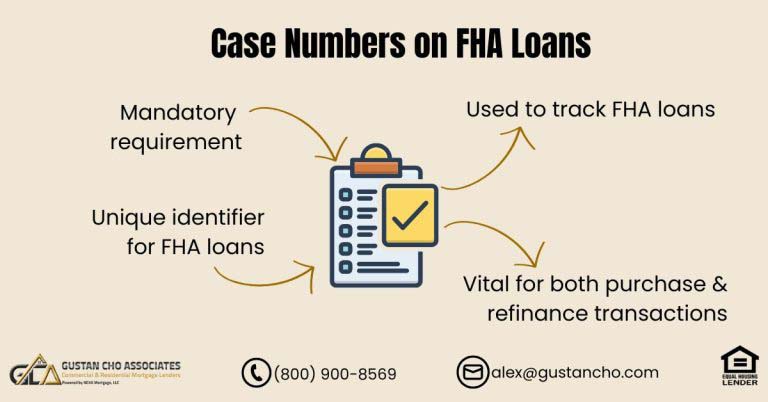This article will delve into the mortgage guidelines for FHA DTI ratios on manual underwrites. The key distinction between manual and automated underwriting system guidelines lies in the debt-to-income ratio cap applied during manual underwriting.
As per FHA DTI ratios on manual underwrites, the allowable DTI ratios are subject to specific caps, and these limits are influenced by the number of compensating factors identified during the evaluation process.
Compensating factors may offset a borrower’s higher DTI, providing a more comprehensive picture of their financial stability and ability to handle mortgage obligations.
The crucial role played by the Debt-to-Income Ratio can’t be emphasized enough in the mortgage loan qualification process, also known as DTI, determines this ratio by dividing the total of all monthly minimum payments, including the proposed principal, interest, taxes, and insurance (P.I.T.I.) for the new property, by the borrower’s monthly gross income.
We will explore the following sections in detail in the upcoming discussion. The aim is to provide an in-depth analysis of each section without leaving any important detail about FHA DTI Ratios on manual underwrites behind.
Maximum FHA DTI Ratios on Manual Underwrites Versus AUS Approvals
Mortgage loan programs have their maximum debt-to-income ratio limits. FHA Guidelines on debt-to-income ratio are capped at 46.9% DTI front-end and 56.9% DTI back-end for borrowers with 620 FICO or higher credit scores.
For FHA Borrowers With Under 620 FICO Credit Scores, the debt-to-income ratio caps on FHA loans can get reduced to 43% DTI to get an approve/eligible per the automated underwriting system.
The limitations on front-end debt-to-income ratios for FHA borrowers with credit scores below 620 FICO are contingent upon the number of compensating factors in the borrower’s profile. Individuals with credit scores below 620 FICO are categorized as higher-risk borrowers, potentially resulting in elevated mortgage rates.
In cases where the credit score is below 620, the Fannie Mae Automated Underwriting System may need the verification of rent for these borrowers. This holds particularly true in manual underwrites, emphasizing the significance of FHA DTI ratios in such instances.
Credit Score Below 620? You Can Still Qualify for an FHA Loan
FHA Loans Are Available for Scores as Low as 500 – Get Pre-Approved Today
Debt-To-Income Ratio Guidelines on Conventional Loans
Fannie Mae and Freddie Mac guidelines on debt-to-income ratios, the maximum debt-to-income ratio limits are capped at 50% DTI to get approve/eligible per DU FINDING or LP FINDINGS. In the following sections of this article, we will discuss FHA and Conventional loans and their debt-to-income ratio requirements.
The two biggest factors affecting mortgage loan debt-to-income ratios are auto and student loans.
One benefit of conventional and FHA loans is that Income-Based Repayment (IBR) is allowed as long as it reports on all three credit bureaus. HUD, the parent of FHA, has recently updated its guidelines on student loans and allowed IBR Payments. 0.50% of the outstanding student loan balance is a hypothetical monthly debt on FHA loans.
FHA DTI Ratios on Manual Underwrites Versus Automated Approvals
FHA permits manual underwriting on loan applications that cannot get approve/eligible per DU FINDINGS and get referred/eligible per DU FINDINGS.
There are instances where an approve/eligible per AUS loan application need to get downgraded to manual underwriting due to underwriter discretion.
Only some lending institutions engage in manual underwrites. Manual underwriting refers to the process wherein an FHA mortgage underwriter manually assesses loan applications rather than relying on the Fannie Mae Automated Underwriting System (AUS). For manual underwriting, a prerequisite is twelve consecutive months of punctual payments. Additionally, verification of rent is mandatory in the manual underwriting process, and compensating factors are also a requisite for manual underwrites. If you want to get more information speak with our loan officer about FHA DTI
FHA Loan During And After Chapter 13 Bankruptcy Mortgage Guidelines
There are mortgage loan applications that must be manually underwritten. For example, all FHA loans after Chapter 13 Bankruptcy discharge that has less than two years after the Chapter 13 Bankruptcy discharge need to be manually underwritten. With all manual underwrites, verification of rent is mandatory
Verification of Rent is only useful and valid when the renter can provide 12 months of canceled checks that he or she had paid the landlord. Or 12 months’ bank statements proving that the funds have been transferred from the renter’s bank account into the landlord’s bank account and have been timely for the past 12 months with no late payments.
If the renter has been paying cash to the landlord and gets cash paid receipt from the landlord, that does not count for verification of rent purposes
Borrowers have to understand that cash does not count in the mortgage industry. All income, deposits, and receipts must be documented by canceled checks, and cash deposits cannot be used for income qualification and credit qualification purposes.
With manual underwriting, the mortgage underwriter has a lot of underwriter’s discretion. The mortgage underwriter will look for compensating factors.
What Are Compensating Factors For Manual Underwrites
Compensating Factors are positive factors that give strength, such as the following:
- reserves
- additional documented income, such as part-time income
- bonus income
- overtime income that the borrower has but was not used as qualifying income
- Larger down payment and higher credit scores are strong compensating factors.
- Borrowers who are in the healthcare fields
- Borrowers employed by the government, such as law enforcement officers and firefighters, and school teachers with job longevity, is considered compensating factors.
- This is because of the demand for employment in those fields
- Multiple jobs and gaps in employment are considered less than favorable factors
Mortgage underwriters will take that into account when underwriting a manual underwrite.
Maximum FHA DTI Ratios on Manual Underwrites
In contrast to the automated underwriting system, FHA DTI Ratios On Manual Underwrites do not impose specific debt-to-income ratio requirements or caps. Nevertheless, it’s common for underwriters to prefer borrowers to maintain a debt-to-income ratio below 50%. While many mortgage underwriters generally favor a debt-to-income ratio not exceeding 43%, there are no rigid guidelines.
Recently, I observed a manual underwriting approval for a borrower with a 53% DTI. This approval was influenced by strong compensating factors, such as the borrower holding a second full-time job as a nurse.
In the initial phase of her career, she committed over 14 years to her role as a nurse with her first employer. Transitioning into a new chapter, she embraced her second full-time position as a nursing professor 18 months ago. However, despite the notable experience and dedication in her current role, the second job could not be considered for qualifying income due to its less than two-year seasoning.
Interestingly, the mortgage underwriter recognized her employment history’s unique circumstances and deemed it a strong compensating factor. This nuanced evaluation led to the approval of the manual underwriting mortgage loan application, even with a relatively high 53% back-end debt-to-income ratio.
Your Dream Home Is Still Within Reach
Apply Online And See How FHA Loans Work with Lower Credit Scores
This underscores the significance of understanding and considering FHA DTI ratios on manual underwrites, where a holistic perspective on an applicant’s financial situation can lead to approvals that may not align with conventional qualifying criteria.
Homebuyers needing a direct lender specializing in manual underwriting, please contact us at Gustan Cho Associates at 800-900-8569 or text for faster response. Or email us at alex@gustancho.com. We are available seven days a week, evenings, weekends, and holidays to take your phone calls and answer your questions on manual underwriting case scenarios or other mortgage loan case scenario questions.
Frequently Asked Questions (FAQ) About FHA DTI Ratios on Manual Underwrites Mortgage Guidelines
1. What is Debt-to-Income Ratio (DTI), and how is it calculated?
Debt-to-Income Ratio (DTI) is a crucial factor in mortgage loan qualification, calculated by dividing the total of all monthly minimum payments, including the proposed principal, interest, taxes, and insurance (P.I.T.I.) for the new property, by the borrower’s monthly gross income.
2. How are FHA DTI ratios on manual underwrites determined?
FHA DTI ratios on manual underwrites are subject to specific caps, influenced by the number of compensating factors identified during the evaluation process. Compensating factors play a crucial role in offsetting a borrower’s higher DTI, providing a comprehensive picture of their financial stability.
3. What are the maximum FHA DTI ratios on manual underwrites versus automated approvals?
FHA DTI ratios on manual underwrites may not impose specific caps, but compensating factors play a significant role. Automated approvals have specific limits, with FHA guidelines capping at 46.9% DTI front-end and 56.9% DTI back-end for borrowers with 620 FICO or higher credit scores.
4. How do credit scores below 620 impact FHA DTI ratios on manual underwrites?
For FHA borrowers with credit scores below 620 FICO, the FHA DTI ratios on manual underwrites can be reduced to 43%, subject to compensating factors. These borrowers are considered higher-risk, potentially leading to higher mortgage rates.
5. When might an FHA loan application require manual underwriting?
FHA permits manual underwriting for loan applications that cannot get approve/eligible per DU FINDINGS and get referred/eligible per DU FINDINGS. Manual underwriting may be necessary due to underwriter discretion in some cases.
6. What are compensating factors in manual underwrites?
Compensating factors include reserves, additional documented income (e.g., part-time, bonus, overtime income), larger down payment, higher credit scores, and job stability in specific fields like healthcare or government employment.
7. Are there specific guidelines for FHA DTI ratios on manual underwrites?
Unlike the automated underwriting system, FHA DTI Ratios On Manual Underwrites do not impose specific debt-to-income ratio requirements or caps. However, underwriters generally prefer borrowers to maintain a debt-to-income ratio below 50%, with no rigid guidelines.
8. Can a mortgage application be manually underwritten after Chapter 13 Bankruptcy?
Yes, mortgage loan applications, such as FHA loans after Chapter 13 Bankruptcy discharge with less than two years post-discharge, must be manually underwritten. Verification of rent is mandatory in such cases.
9. Can compensating factors influence a manual underwriting approval with a higher DTI?
Yes, compensating factors can significantly impact manual underwriting approvals. The article provides a real-life example of a borrower with a 53% DTI who obtained approval due to strong compensating factors, showcasing the nuanced evaluation in manual underwrites.
This blog about FHA DTI Ratios on Manual Underwrites Mortgage Guidelines was updated on February 11, 2025.
Bad Credit? Don’t Worry! Learn How FHA Loans Can Help You Buy a Home
Apply Online And Get recommendations From Loan Experts










